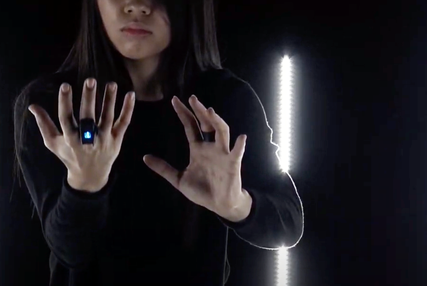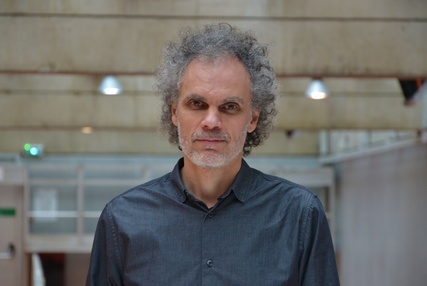Pénétrer dans l’atelier du pôle Instrument (Ingénierie et Prototypes), au premier sous-sol de l’Ircam, et y rencontrer Emmanuel Fléty, c’est ouvrir la porte sur un pan méconnu des recherches ircamiennes et, plus largement, des dispositifs embarqués. Ce qui se pratique ici, dans ce capharnaüm où les imprimantes 3D dernier cri côtoient une mosaïque d’écrans, des piles d’oscilloscopes et des placards débordant de boîtiers électroniques, vintage ou non, est un artisanat de haute volée, combinant nouvelles lutheries et génie geek de l’électronique.
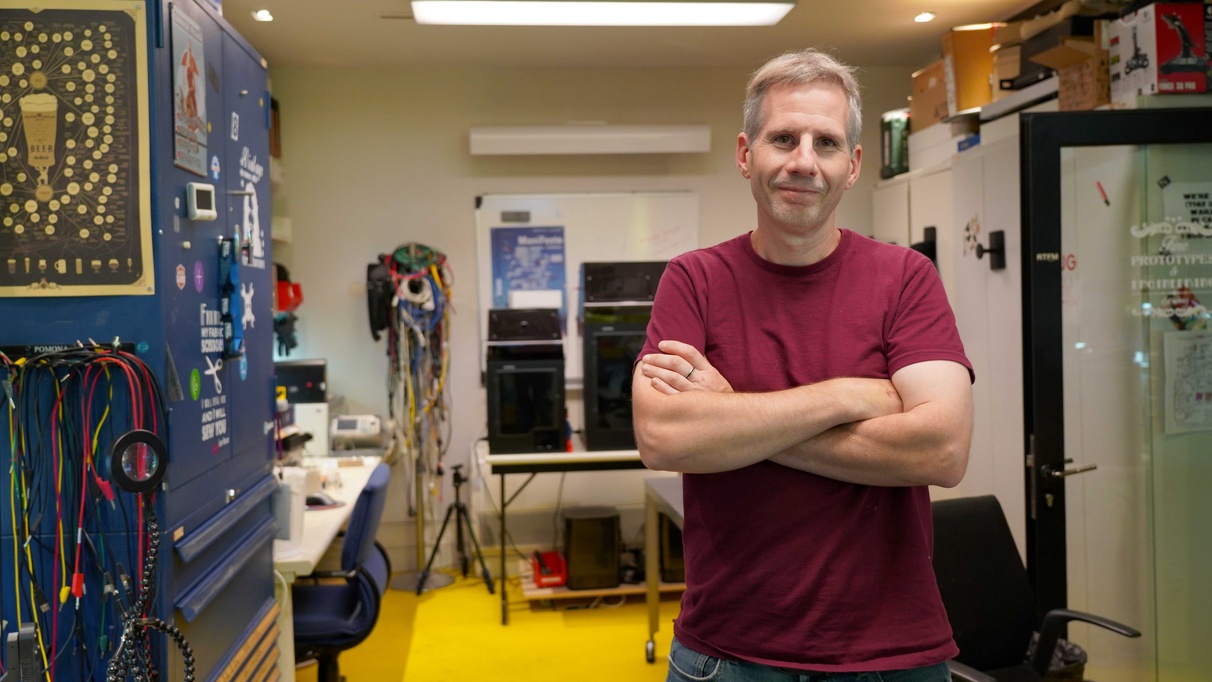
Emmanuel Flety @ircam
« Geek » : le mot est lâché, et Emmanuel Fléty l’assume avec un aplomb non dénué d’humour et de fierté. Car l’homme est un authentique passionné, doublé d’un historien hors pair de son domaine. Depuis ses premiers pas dans le monde merveilleux de l’électronique, il a vu défiler toutes les technologies et normes successives : celles dont on se souvient (le MIDI), celles qu’on a oubliées (à l’instar ces mémoires embarquées que l’on devait cuire aux UV une quinzaine de minutes pour les effacer avant de pouvoir les reprogrammer – cycle à reproduire à chaque fois, pour la moindre correction ou amélioration de code), et celles qui sont aujourd’hui en usage (comme l’internet des objets qui « nous a sauvés », dixit Fléty).
Bidouilleur inspiré dès l’adolescence, Emmanuel Fléty se forme d’abord en génie électrique et informatique industriel (à l’IUT de Ville d’Avray, dont il garde d’inoubliables souvenirs de liberté créative dans une discipline alors balbutiante), puis il intègre une formation d’ingénieur en électronique et informatique à l’ENSEA.
« Je me dirigeais alors plus vers le développement mais, dès cette période, je m’intéressais à l’électronique embarquée, domaine qui se situe à la jonction de l’électronique et de l’informatique, allant de la fabrication à la programmation. J’aimais bien les systèmes automatisés comme ceux qui pilotent certains processus dans les voitures ou ceux qui équipent les ascenseurs. Je trouvais ça assez magique : comment l’ordinateur de l’ascenseur gère-t-il les règles de priorité, par exemple ? Dès mes premières années de formation, j’ai aimé faire, c’est-à-dire fabriquer ces systèmes, pour appliquer, quasi immédiatement et concrètement, mes connaissances. Je me souviens de mon premier système embarqué : c’était au début des années 1990 et j’avais imaginé et installé dans la R5 d’un ami un système d’ouverture et fermeture centralisées des portes, qui fermait aussi les fenêtres ! – d’un seul clic, la classe : c’était alors l’apanage des voitures de luxe. C’est ainsi que je me suis passionné pour les microcontrôleurs, j’aimais beaucoup à la fois le côté « artisanat laborieux » (enfant, je voulais être luthier ou joaillier), mais aussi la confrontation avec les contraintes logistiques liées à ces dispositifs, et ce défi de faire beaucoup avec peu. »
C’est dans ces années-là qu’Emmanuel Fléty commence à collaborer avec l’Ircam, dans le cadre d’un stage d’IUT, avec l’équipe Analyse-Synthèse, pour travailler sur un module d’analyse du Super Vocodeur de Phase (SVP) :
« J’ai participé à l’implémentation et au codage de la prédiction linéaire du spectre : fabriquer une enveloppe spectrale interpolée de manière prédictive et linéaire à partir du spectre pour faire notamment de la synthèse croisée. C’est ce type de techniques de réduction de la quantité d’informations, s’appuyant sur le principe des poids perceptifs, qui donnera naissance au MP3. »
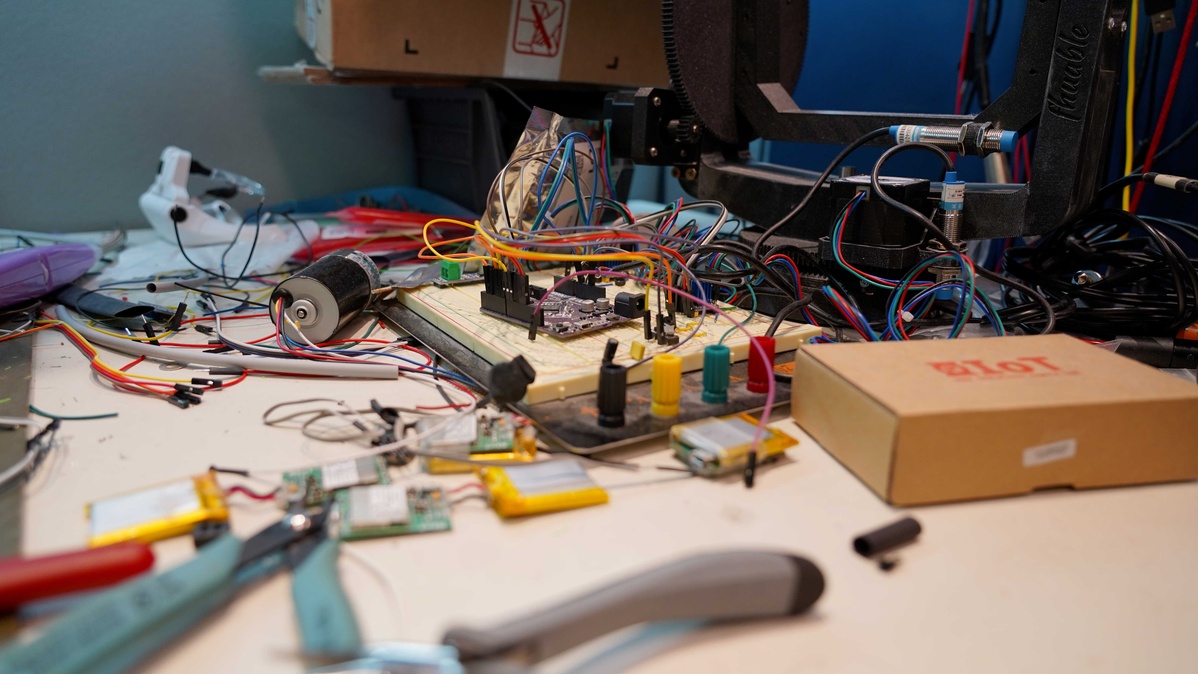 L'atelier d'Emmanuel Flety
L'atelier d'Emmanuel Flety
Quelques années plus tard, l’Ircam lui demande une classification des capteurs pour les contrôleurs gestuels. À l’époque, l’électronique est en berne à l’Ircam suite à l’abandon de la 4X. Échaudés par les échecs précédents liés à des choix technologiques radicaux, on se concentre alors davantage sur l’informatique, aux dépens du hardware, avec la montée en puissance de ce qui deviendra Max.
Mais cette redirection des efforts de la recherche occulte un domaine entier de l’informatique musicale : l’interprétation de l’électronique par les musiciens sur scène. C’est-à-dire l’interaction du jeu du musicien avec l’électronique, qui peut aller de la simple synchronisation à une véritable influence de la performance sur le discours électronique, via la modification en temps réel des paramètres de synthèse ou de traitement informatique.
Or il se trouve que c’est à cette époque-là également (dans le courant des années 1990) que l’Ircam lance son fameux Cursus – et les étudiants aspirent à ce genre d’interaction. D’où la nécessité d’établir un état de l’art.
Ainsi se dessine la carrière future d’Emmanuel Fléty : une carrière à l’interface entre plusieurs milieux, plusieurs disciplines, plusieurs signaux : entre l’acoustique et l’électronique, le musical et le technique, l’artistique et le scientifique. Et il s’occupe de tout : conception et fabrication des dispositifs, programmation, traduction d’un signal audio en signal électrique, puis électronique et informatique, et vice versa. En langage technique, ça s’appelle les « interfaces de numérisation et d’acquisition ».
Son dada ? Les « capteurs sans fil miniaturisés à faible latence », autant d’outils essentiels pour la capture et la reconnaissance de mouvements mais également pour la création de nouvelles interfaces gestuelles et pour la lutherie numérique. Ses casse-têtes quotidiens sont nombreux : discrétion et maniabilité des dispositifs, réduction de la latence, facilité d’intégration des signaux aux interfaces…
Au fil des années, Emmanuel Fléty met au point des technologies qui font date, à l’instar de l’AtoMIC Pro, convertisseur MIDI universel et programmable, de 2x16 voies, fabriqué de manière industrielle – un incontournable, « qui a permis de numériser les signaux le plus vite possible, en exploitant au mieux le MIDI de l’époque » – ou l’EtherSense, qui a multiplié le débit par 32 en réduisant la latence, suivi de sa version portable, la WiSe Box. Son expérience et son adaptabilité lui permettent de tirer la substantifique moelle de toutes les normes, à l’instar de l’OSC (OpenSound Control) inventé par David Wessel, qui divise la latence de l’AtoMic Pro par 32 – et qui, à sa sortie, laisse le logiciel à la traîne !
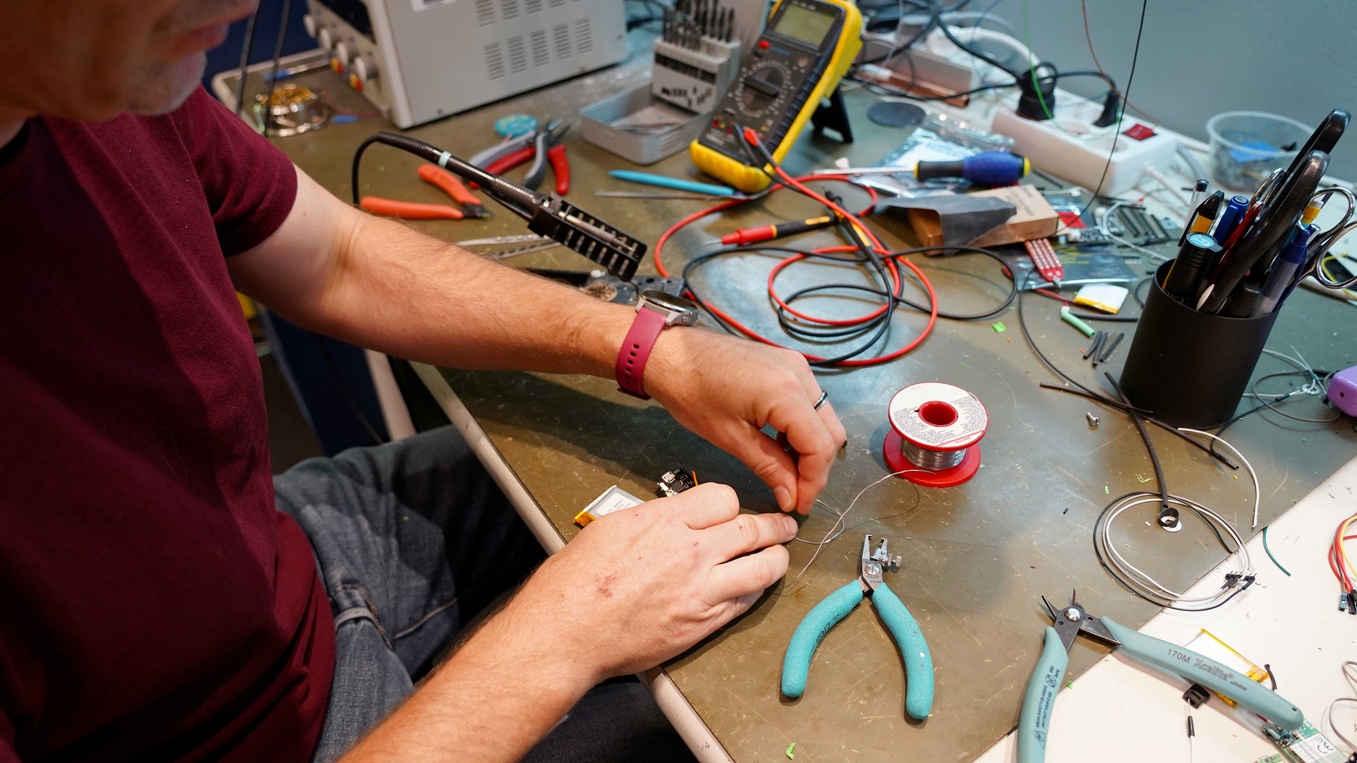
Emmanuel Flety dans son atelier
Papillonnant d’un étage à l’autre de l’institut, Emmanuel Fléty participe à de multiples projets inter-équipes, sur des instruments augmentés divers et variés (pianos, violons, altos, violoncelles, harpes, accordéons, etc.) ou des capteurs de geste – tel le révolutionnaire R-IoT, mis au point en collaboration avec l’équipe ISMM (Interaction son musique mouvement) de Frédéric Bevilacqua, qui mesure les mouvements en 3D selon 9 axes, et qui est, depuis sa première version voilà sept ans, utilisé par quasiment tous les compositeurs de l’Ircam désireux de travailler sur le mouvement.
C’est ce R-IoT (dont le nom est un jeu de mots avec « riot » : émeute en anglais) qu’ISMM et Emmanuel Fléty remettent une nouvelle fois sur le métier, notamment dans le cadre de la résidence en recherche artistique de Basile Chassaing – les recherches de ce dernier accompagnant et nourrissant le développement de l’outil.
Certaines améliorations tombent sous le sens : le précédent design du R-IoT datant de 2017, une série de mises à jour s’impose, pour faire face à l’obsolescence de certaines normes et composants. C’est ainsi que la plateforme se voit doter d’un nouveau microcontrôleur, qui offre d’un coup d’un seul un double support des nouvelles normes Bluetooth (Bluetooth Low Energy ou BLE) et WiFi, ainsi qu’une compatibilité étendue à l’environnement officiel de développement des Arduino[1] (le précédent R-IoT était programmé sur ce qu’on appelle un « fork », c’est-à-dire un dérivé de la base logicielle d’Arduino – le terme de « fork », « fourche », faisant référence à la bifurcation prise par un code par rapport au tout-venant du code officiel).
C’est aussi l’occasion d’un choc de simplification de l’interface de configuration, qui se fera soit via une page web, soit via un fichier de configuration, et inclura une fonction « Data Logger » – c’est-à-dire un enregistrement in situ des données récoltées par les capteurs.
S’agissant du matériel, ce nouveau microcontrôleur permettra au R-IoT de recevoir de nouveaux capteurs (d’altitude et de température), ainsi que davantage de ports d’entrée et de sortie pour brancher des capteurs externes.
Enfin, et c’est peut-être l’évolution la plus spectaculaire, Emmanuel Fléty envisage de rendre cette nouvelle plateforme compatible avec un petit écran externe.
« L’idée, dit-il, est d’en faire une version poignet plus ergonomique, de fluidifier la communication entre la scène et la régie et de faciliter la configuration… On se rapproche de ce qu’offre une montre connectée, mais sans perdre de vue notre sujet : générer de l’expressivité via le geste artistique, et cela sans fil et à faible latence. »
Dans nos prochains épisodes, nous nous irons à la rencontre d’Emmanuelle Grach, chorégraphe avec laquelle Basile Chassaing collabore.
![]()
[1] Marque d’une plateforme de prototypage open source qui permet aux utilisateurs de créer des objets électroniques interactifs à partir de cartes électroniques matériellement libres sur lesquelles se trouve un microcontrôleur. Les schémas de ces cartes électroniques sont publiés en licence libre.



